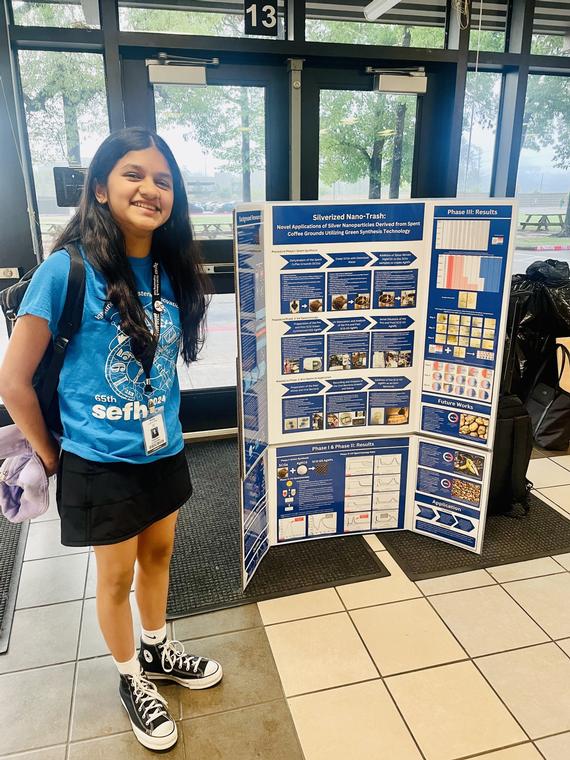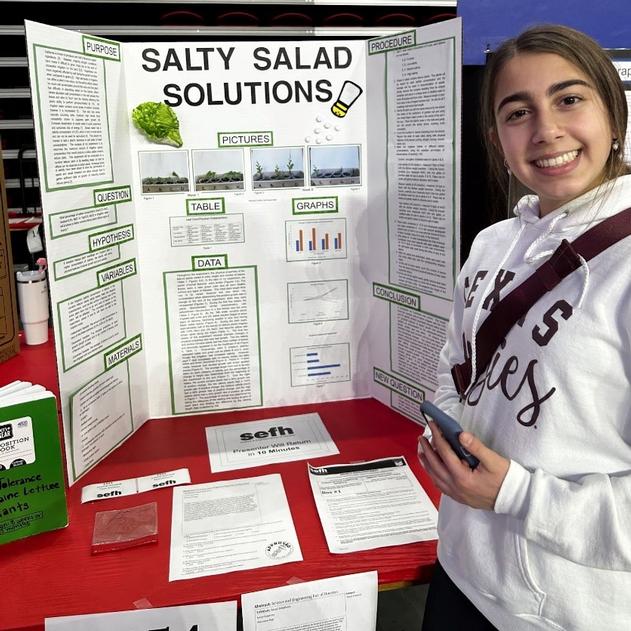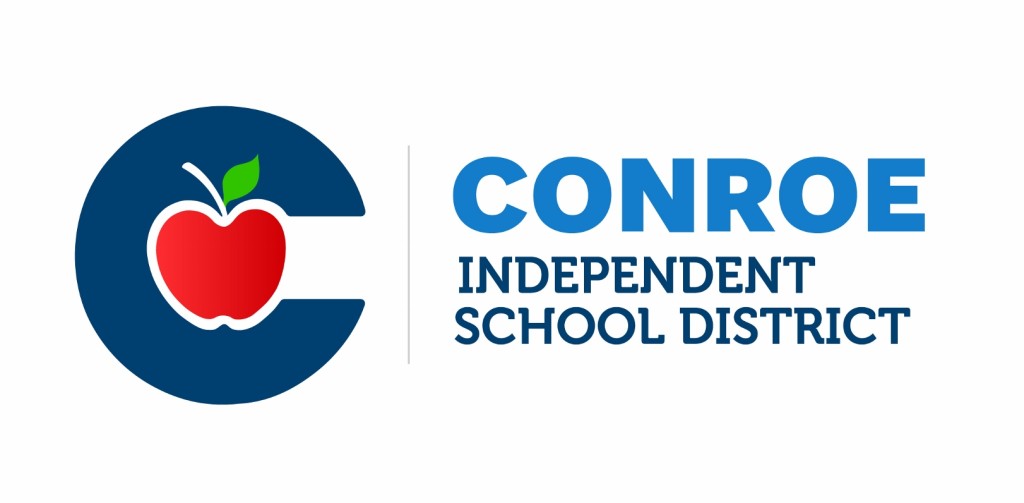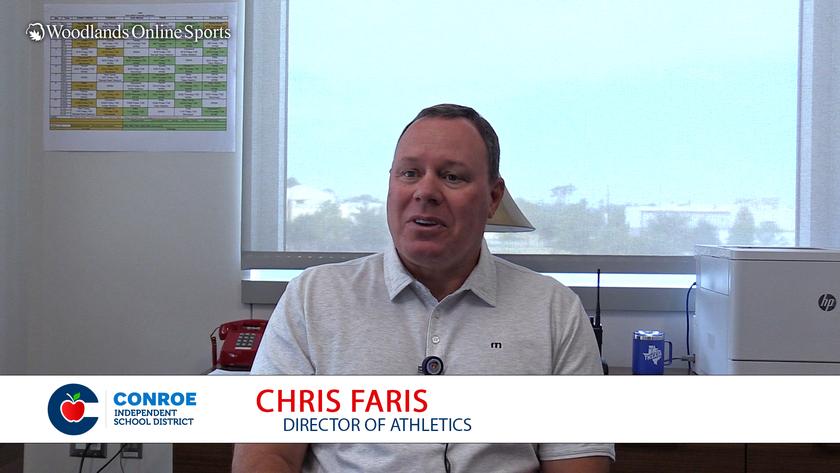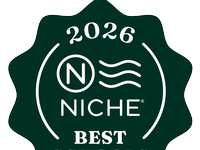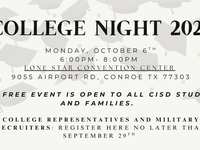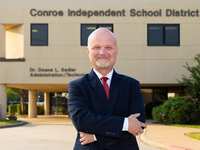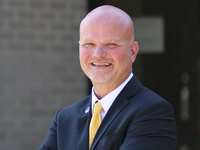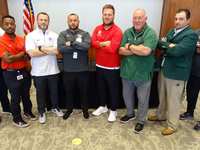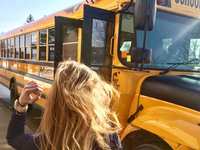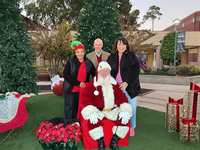- Sections :
- Crime & Public Safety
- Restaurants & Food
- Sports
- More
Conroe ISD Junior Highers Excel at State Science Fair
THE WOODLANDS, TX -- Karishma Parghi, an eighth grader at Knox Junior High School, won first place in the Junior Biochemist Division at the Texas Science and Engineering Fair. She advanced to the Blue Ribbon Judging, or the “finals table,” and placed as the runner-up in the Grand Judging for the Junior Best of State Life Sciences Award, the highest-ever achievement for a Knox student.
Parghi believes there is significant opportunity in waste, particularly waste from natural materials, in offering solutions to real world problems. Last year, her project was focused on repurposing tea leaves that would have otherwise been discarded as a fertilizer additive in Phasoleus aureus plants (bean sprouts). This year, she learned about nanoparticles and firmly believe nanotechnology offers the solution for national and global waste problems.
This year’s science fair project was titled, "Silverized Nano-Trash: Novel Applications of Silver Nanoparticles Derived from Spent Coffee Grounds Utilizing Green Synthesis Technology." Parghi tested a novel eco-friendly green synthesis method for silver nanoparticles from spent coffee grounds and tested the anti-bacterial applications. First, she made coffee using a standard coffee maker, then took the spent coffee grounds that would have normally been thrown away (contributing to upwards of 60 billion tons of waste annually) and used these coffee grounds to make silver nanoparticles. To prove she had these nanoparticles, Parghi reached out to a laboratory at Lone Star Community college, where Dr. Daniel Kainer was kind enough to walk her through using a UV spectrophotometer. This UV data showed the silver nanoparticles were present in the synthesis. After confirming the silver nanoparticles were present, Parghi moved on to test these nanoparticles against common oral bacteria, which was conducted in the Knox laboratory. The silver nanoparticles were very effective as an antimicrobial agent.
Through this year's project, Parghi reinforced her view that technology, specifically nanotechnology, offers a solution to big waste problems. She believes we can make big progress against landfills by thinking smaller, as in nanoparticles.
Outside of science fair, Parghi enjoys participating in many hobbies. She is involved in competitive dance and drill team, is an avid reader, with an interest in historical fiction and mythology. She also enjoys classical Indian singing, performing in recitals since the age of three. She has participated in various school organizations, such as Destination Imagination beginning in second grade, serving as National Junior Honor Society president, and competing in public speaking and Lincoln Douglas debate. Parghi is passionate about teaching younger children and immersing them in the world of STEM, so they can utilize technology to solve large issues. She aims to continue competing in science fair and furthering her research about repurposing waste. Eventually, she hope to pursue a career in STEM.
Peet Junior High
Peet Junior High students Amiya Casperson and Joshua Wallace traveled to Texas A&M University in College Station to showcase their award-winning projects at the Texas Science & Engineering Fair. Wallace’s project on microbial fuel cells earned first place in the category Energy: Sustainable Materials & Design.
“Joshua has always been interested in science,” shared his dad, Rashaud Wallace. “Not only is science one of his favorite subjects in school, but he spent multiple summers over the years at various camps related to computer coding, robotics, and space travel. For science fair, we stressed the importance of time management and how it can benefit Joshua not only in an academic environment, but in life.”
Time management proved an essential element to Casperson and Wallace’s science fair success. Their projects began with intensive planning throughout the fall semester. After selecting an experiment category in August, they spent several months in research, drafting extensive annotated bibliographies by November.
Ms. Terrie Moffitt, a science teacher at Peet Junior High, describes Casperson and Wallace as outstanding students. “These kids just shine in everything they do,” Moffitt said. “They come to school with high personal goals, and when they walk into class, you can see their intent to learn. They’re also kind to others and respectful to everybody, just great students.”
Following wins at the district competition in January, Casperson and Wallace advanced to the regional Science and Engineering Fair of Houston in February where Casperson placed third in Plant Sciences and Wallace placed first in Energy and Transportation. With these honors, they advanced to compete against peers from across the state at the Texas Science & Engineering Fair.
Describing her project, “Salty Salad Solutions,” Casperson explained, “I wanted to find the maximum salt concentration that could produce a viable plant. I started this research because California’s drought crisis is affecting farmers and the agricultural economy throughout our nation, including my family’s ranch. Farmers are turning to the ocean to find an efficient water source but that water needs to be desalinated. My results indicated that romaine plants don’t need absolute desalination of irrigation to grow. A low salinity concentration actually increased growth and viability.”
For Wallace’s project, “Bio-Power 2: How Soil Additives Affect Microbial Power Generation,” he described a YouTube video on microbial fuel cells that first spurred his interest in renewable energy: “I started to research it more and realized that bacteria was what really made the power in microbial fuel cells. So that’s where it all began. Last year, I studied how temperature affects the power generation in a microbial fuel cell, and this year, I expanded that study to look at how different additives affected power generation – compost, humus, and peat.”
For four hours at the state competition, Wallace and Casperson stood proudly by their displays, repeatedly explaining their research and results as more than 350 judges rotated to interview students competing in 20 categories. The expertise each student developed through research and experiments was evident as both projects drew considerable interest, with Wallace earning a first place win in Energy: Sustainable Materials & Design.
Asked about the prestige of winning first place in a state as large as Texas, Joshua Wallace nodded in acknowledgement, but quickly turned the focus back to his passion for researching renewable energy: “I’m interested in MIT for engineering, maybe Stanford or Harvard. I want to continue this study of renewable energies. Solar and wind are already getting a lot of attention, but I think we need to look closer at microbial fuel cells.”
Casperson’s concern for sustainable solutions was also evident, as she described the attainability of new irrigation approaches in plant science. Asked about future plans, Casperson shared, “I really want to go to (Texas) A&M and become involved in the medical field.”
How can parents encourage kids to pursue high-level scientific research? Joshua's dad, Rashaud Wallace, offered their family’s advice: "Expose your kids to as many different experiences as possible so that they can build a sense of what is going on around them. And encourage them to read on a regular basis, to ask questions about a variety of topics and subjects."
Wherever they go from here, Joshua Wallace and Amiya Casperson’s innovative and award-winning projects have earned the pride of their school and community.

